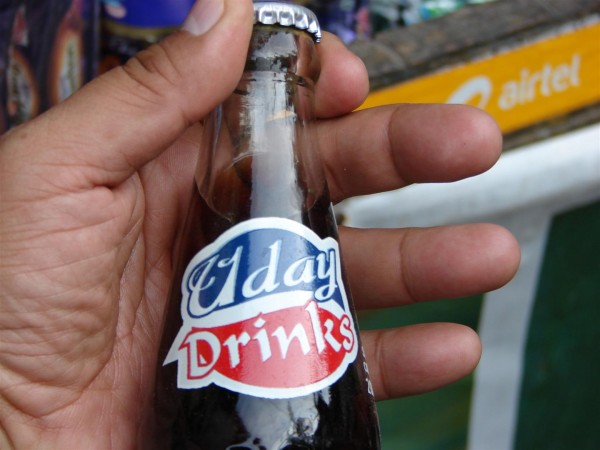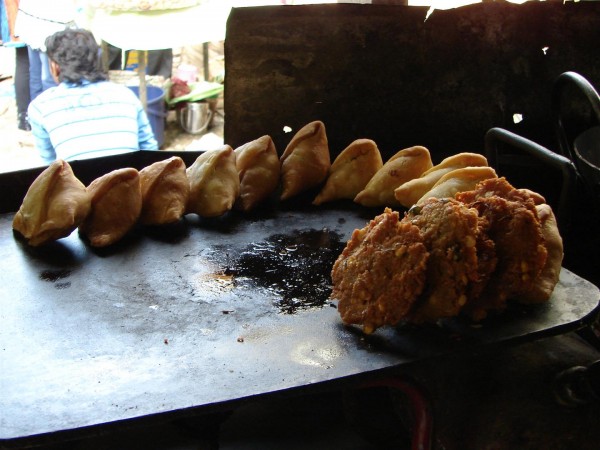Trip: Port Blair and Havelock. February 2012.
As my wife and I were getting down from the local bus at the Chatham Jetty in Port Blair, I asked a girl standing right next to me, ‘The bus doesn’t go any further?’
The girl smiled and replied, ‘It turns back and goes the same way it came here.’
‘Ok. And where are you headed to?’ This was a loaded question and I got a panicked side glance from my wife. We were tourists in the Andaman islands and the Tamilian as well as Bengali population didn’t seem very liberal in their outlook, or so it appeared to us in the less than twenty-four hours that we had been here.
Fortunately for me, the girl was amiable and smiled as she replied, ‘We are all going to our village across.’ Saying this she pointed out to the island that I could see on the horizon, and continued, ‘Bumflaat.’
‘Bumflaat?’ I repeated incredulously and slowly, ‘Right. And what do you have there in Bumflaat?’
‘Homes. Nothing else,’ she hesitatingly said, and then seemed to remember, ‘Yes, Montrait is also there.’
‘Montrait?’ I tried not to let loose the elements of incredulity seep in again in my voice. Not good when you’re talking to the natives anywhere, and anyway, I hardly knew much about this place except that Port Blair was also known as Kaala Paani, has a Cellular Jail here, and that we had a booking in Havelock, another island some distance away. There were other bits of information that I had read in the travel books and on various travel-sites, but nowhere was either of these names mentioned.
And then, like lightening, the correct word struck me, and I hurriedly asked her as she was moving away after getting down, ‘Mount Harriet, you mean?’
She stopped and thought for a second before nodding her head, ‘Yes, Montrait.’
Ah! I thought, this place does need another Col. Pickering and Professor Higgins and all the latest innovations in the world of corrective phonetics. But I quickly turned away from such academic diversions and made a quick decision, turned to my wife and asked, ‘How about going with these girls and others to Bumflaat?’
She agreed, the sport that she is, and in the next fifteen minutes we were standing on the top deck of the ferry that was turning to take us to this funny sounding village on an island where we could also get a chance to go up the famous Mount Harriet. This new friend helped us get the ferry tickets, which, to our surprise, was just Rs 4 per person.
‘The package tour agents must be charging fifty times this amount,’ I whispered to my wife.
She was obviously not listening to me as instead of replying, she simply pointed out a small board on the ferry that proudly announced:
“Phoenix Bay – Chatham Jetty – Bamboo Flat”
‘So that’s another phonetic mystery solved,’ I laughed.
Bamboo Flat was indeed a small island with hardly three hundred yards of shops spread out on three roads going to different directions. In one of these directions was Mount Harriet, but you will get to read that interesting story in another post. It was after we returned from Mount Harriet that day that we decided to spend some time exploring the three hundred yard market area there and we slowly walked photographing the female fish sellers, the local beverage there, the flower seller, the quaint shops… unfortunately, it is not possible to capture the unhurried pace and the peace and tranquillity on a still camera, but that is something that still figures in my mind.
‘Where can we eat here?’ I asked the person inside a shop selling cold drinks.
‘Small shops, sir. Nothing much you will get here.’
‘Still,’ I persisted.
He just shook his head in the negative. Then my wife interjected, ‘Where can we get some samosas or pakoras?’
He pointed out to what seemed a little shack some distance away, ‘There is a shop there. Right next to the puchka wala.’
This wasn’t a strange name, though puchkas were called gol-gappas in Delhi and they were a part of the spicy chaat menu. We slowly walked there, peered inside to find two men seated at a table on the dark end and no one else anywhere.
‘Come in,’ one of the men said, and shouted out loudly, ‘Arre, Venkat, customers here.’
A tall dark smiling man climbed the couple of stairs and simply said, ‘Yes, I am Venkat Rao.’ I could see this was a small house with at least three rooms in a straight line and seeing me looking curiously, Venkat Rao said, ‘When the tsunami came, sea water came right up to the place where I am standing. The other rooms that you see were submerged and we lost a lot.’
Then sensing that this story was not why we were standing in his shop, he asked, ‘What will you have? Tea?’
My wife had already sighted the dal-vadas in a large thali in the shop, and she replied, ‘We’ll have these vadas.’
‘Two plates, please,’ I added.
‘Can we have tea also?’ asked my wife.
Before Venkat could answer, the other customer inside held his glass of tea and said, ‘Nice tea. Lemon and black pepper added. Very good for health.’ This concoction was, expectedly, pale chocolate brown and I had initially thought he was drinking some local liquor. I reminded myself again not to fall for the initial assumptions as they could be more than just innocently misleading.
Now it was Venkat’s turn to inform us that the islands in the region always had a short supply of fresh milk. In fact, the islanders were using milk powder if a milky tea was what they wanted, but that too was a luxury because of the added cost. Nothing unusual so far. These guys were selling lemon tea with ground black pepper. Why would I sit down and write a complete blog post on something that was not unusual?
The twist in this tea-tale comes now. There was another friend of the man who was having tea, sitting patiently and silently, waiting for his tea. Venkat asked us to think before we actually ordered this concoction without milk here and turned to prepare another glass of tea.
He tilted the kettle on the gas stove and, to my surprise boiling water was poured into a glass held in his hands. Tea, I thought, where is the tea? Then I noticed that instead of a lid, the kettle had a steel mug going deep into it. Things are getting stranger and stranger, I thought, this island certainly has mysterious ways!
I would actually have fallen off the high bench that I was sitting on, had my balance not corrected because of my hands coming up to click a photograph of this utterly mystical tea-making. I saw Venkat lifting a wire handle that held a sieve that was dipped into the mug on the kettle. With a clean swift motion he took the sieve towards the glass and filled in it some of the dark concoction that was dripping from it. The sieve was nothing like I had ever seen as the portion that we call a sieve was almost seven inches long.
Venkat later explained, ‘The sieve is a tailor-stitched muslin cloth and the wire handle was done by me. The tea leaves are inside the sieve which is dipped in water inside the mug.’
‘Does this help the tea taste better?’
‘Yes, it does. We islanders believe that tea leaves must be in hot water which is not directly over any form of fire. This gives it soothing vibes that help the tea drinker.’
There were a lot of other things we talked about as we drank this special lemon ground black pepper tea in that little shop on Bamboo Flat and found that such trips were much better than any organised tour.
I’m sure this video on Venkat’s tea-making will find you too spell bound… and, when you go on a trip to Andaman, you’ll surely take a local ferry and search for Venkat’s tea-shop there on Bamboo Flat… oops! Bumflaat!
This travel article is written to be a part of the ‘Around the World with Expedia’ contest on indiblogger. Contest sponsors are www.expedia.co.in
Arvind Passey
29 February 2012
















1 comment
Kriti says:
Mar 1, 2012
What an interesting tale of adventures this is! Loved the way the piece held my attention (and my eyes from blinking) right from the start. Cheers to Bumflaat : ))
kriti-howaboutthis.blogspot.com